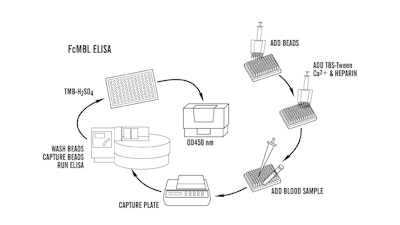Innovations in sensor technology, immune cell stimulation, biofilm and genome engineering and more
To realize its overarching goal to invent and commercialize disruptive solutions for healthcare, energy, architecture, robotics, and manufacturing, the Wyss Institute is creating a patent portfolio in relevant areas that are or can become an essential basis for specific business development and commercialization efforts. To learn more about these innovations, contact our Business Development Team.
The Wyss Institute’s U.S. patents issued between October and December 2017 are as follows:
Artificial skin and elastic strain sensor
U.S. Patent 9,841,331 (December 12, 2017)
Robert J. Wood, Yong-Lae Park, Carmel S. Majidi, Bor-rong Chen, Leia Stirling, Conor James Walsh, Radhika Nagpal, Diana Young, and Yigit Menguc
An elastic strain sensor can be incorporated into an artificial skin that can sense flexing by the underlying support structure of the skin to detect and track motion of the support structure. The uni-directional elastic strain sensor can be formed by filling two or more channels in an elastic substrate material with a conductive liquid. At the ends of the channels, a loop port connects the channels to form a serpentine channel. The channels extend along the direction of strain and the loop portions have sufficiently large cross-sectional area in the direction transverse to the direction of strain that the sensor is unidirectional. The resistance is measured at the ends of the serpentine channel and can be used to determine the strain on the sensor. Additional channels can be added to increase the sensitivity of the sensor. The sensors can be stacked on top of each other to increase the sensitivity of the sensor. In other embodiments, two sensors oriented in different directions can be stacked on top of each other and bonded together to form a bidirectional sensor. A third sensor formed by in the shape of a spiral or concentric rings can be stacked on top and used to sense contact or pressure, forming a three dimensional sensor. The three dimensional sensor can be incorporated into an artificial skin to provide advanced sensing.

Monolithic fabrication of three-dimensional structures
U.S. Patent 9,833,978 (December 5, 2017)
Pratheev Sabaratnam Sreetharan, John Peter Whitney, and Robert J. Wood
Abstract: A multi-layer, super-planar structure can be formed from distinctly patterned layers. The layers in the structure can include at least one rigid layer and at least one flexible layer; the rigid layer includes a plurality of rigid segments, and the flexible layer can extend between the rigid segments to serve as a joint. The layers are then stacked and bonded at selected locations to form a laminate structure with inter-layer bonds, and the laminate structure is flexed at the flexible layer between rigid segments to produce an expanded three-dimensional structure, wherein the layers are joined at the selected bonding locations and separated at other locations.
Controlled delivery of TLR3 agonists in structural polymeric devices
U.S. Patent 9,821,045 (November 21, 2017)
Omar Abdel-Rahman Ali, Glenn Dranoff, and David J. Mooney
Abstract: The present invention comprises compositions, methods, and devices for creating an stimulating an antigen-specific dendritic cell immune response. Devices and methods provide prophylactic and therapeutic immunity to subjects against cancer and infectious agents.

Genetic reprogramming of bacterial biofilms
U.S. Patent 9,815,871 (November 14, 2017)
Neel Satish Joshi, Peter Quoc Nguyen, and Zsofia Magarian
Abstract: Described herein are methods and compositions relating to engineered curli fibers, e.g. CsgA polypeptide. In some embodiments, the methods and compositions described herein relate to functionalized biofilms.
Compositions and methods relating to nucleic acid nano- and micro-technology
U.S. Patent 9,796,749 (October 24, 2017)
Peng Yin and Diming Wei
Abstract: The invention provides nucleic acid structures of controlled size and shape, comprised of a plurality of oligonucleotides, and methods for their synthesis. The structures are formed, at least in part, by the self-assembly of single stranded oligonucleotides. The location of each oligonucleotide in the resultant structure is known. Accordingly, the structures may be modified with specificity.
Spatial sequestration of dynamic nucleic acid circuits
U.S. Patent 9,796,748 (October 24, 2017)
Thomas E. Schaus, David Yu Zhang, Wei Sun, and Peng Yin
Abstract: The invention provides systems and methods for spatial sequestration of elements in nucleic acid circuits.

Assays for antimicrobial activity and applications thereof
U.S. Patent 9,791,440 (October 17, 2017)
Mark J. Cartwright, Nazita Gamini, Donald E. Ingber, Martin Rottman, Michael Super, Julie A. Tomolonis, and Karen A. Sinclair
Abstract: The disclosure provides methods, compositions, and kits for enhanced detection of microbes in samples and monitoring of antimicrobial activity in a subject.
Mutants of Cre recombinase
U.S. Patent 9,777,262 (October 3, 2017)
Nikolai A. Eroshenko and George M. Church
Abstract: The present invention relates to mutants of Cre recombinase.
